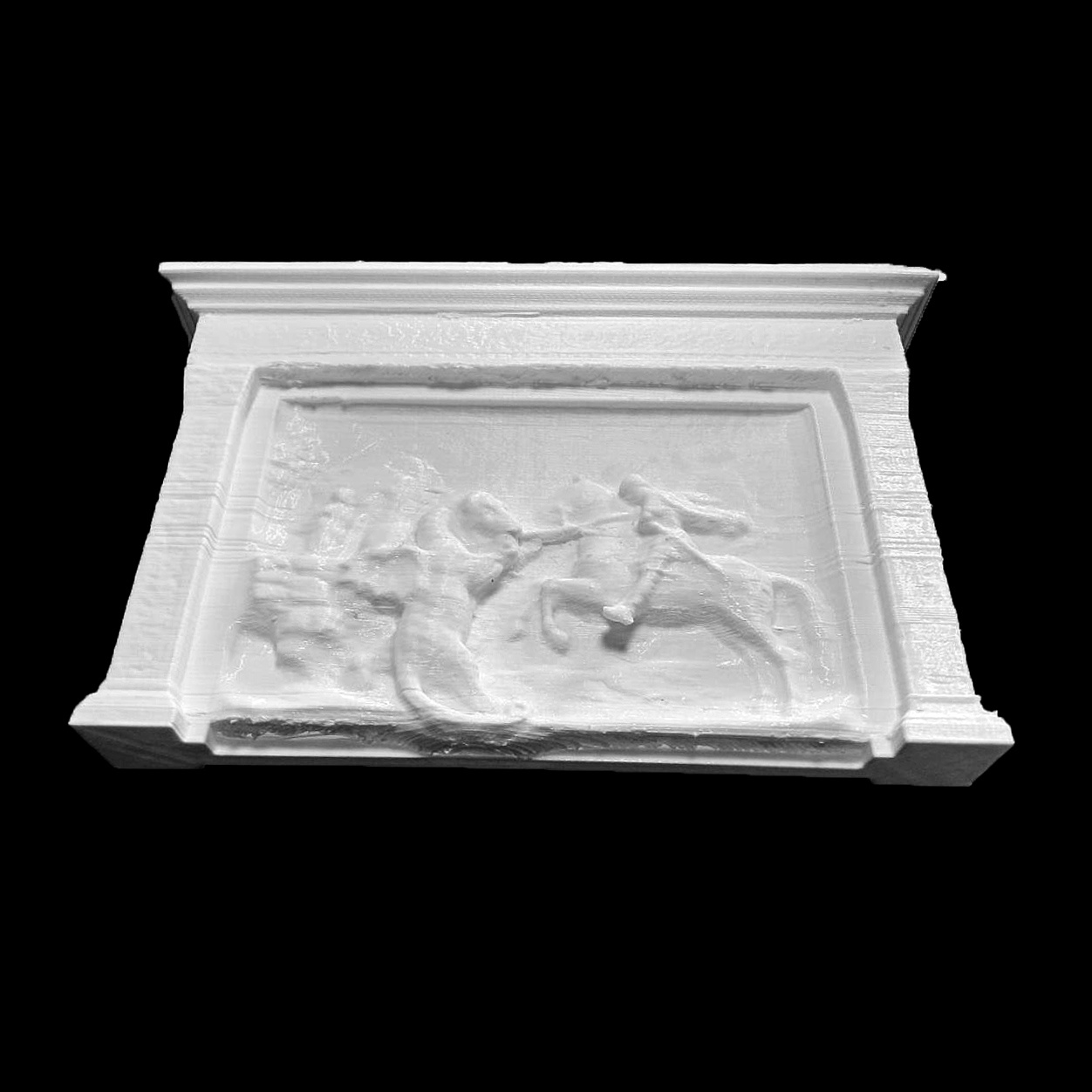
Saint George and the Dragon
myminifactory
In 1508, Cardinal Georges d'Amboise received a commission for a magnificent marble altarpiece in honor of his patron saint, Saint George, at the Château de Gaillon's high chapel. Michel Colombe, a renowned French sculptor, created a breathtaking relief that depicted the saint slaying a ferocious dragon and rescuing a captive princess. This pioneering work marked the beginning of the Renaissance style, as evidenced by its emphasis on compositional clarity and unity. Saint George, a courageous Roman officer, had just crossed into Trebizond, a land plagued by a terrifying dragon demanding human sacrifices to satiate its hunger. The chosen victim that day was the beautiful princess, destined for a gruesome fate. Saint George joined battle with the beast, charging forward with his lance and ultimately freeing the princess from her captor. A completely fictional figure, Saint George evolved into the patron saint of knights, revered throughout Europe after the initial Crusades. His legend grew as he became synonymous with bravery and chivalry. As a testament to his enduring legacy, numerous works of art were created in his honor, each capturing the essence of his remarkable story. Regrettably, most of Michel Colombe's impressive body of work has been lost to time. Only two surviving pieces are known to be attributed to him: the magnificent tomb of Duke Francis II of Brittany (1502-07) in Nantes Cathedral and this exquisite relief of Saint George. The latter was commissioned by Cardinal d'Amboise, a respected prelate who transformed his chateau at Gaillon into a hub for the early French Renaissance. Cardinal d'Amboise had envisioned an altar dedicated to his patron saint, featuring a stunning marble altarpiece designed by Colombe. This relief was crafted in 1509-10 within the artist's studio in Tours, where he resided as an older man. Following the destruction of the high chapel and part of the chateau during the Revolution, the remaining marble artifacts, including this masterpiece, were acquired by the Musée des Monuments français in 1797. They eventually found a new home at the Louvre in 1818. This groundbreaking relief stands as a pivotal work between the Gothic era and the early Renaissance, showcasing Colombe's initial forays into perspective: a clumsy succession of planes, with the princess appearing diminutive in the middle distance, his difficulty employing relief, the prominent volumes of the saint and dragon, and his hesitance in representing nature. The attire, armor, and surcoat worn by the knight and princess are characteristic of Anne of Brittany's reign. The dragon, a product of the Gothic imaginary bestiary, exudes an air of wonder rather than fear. The intricate ornamental details – the dragon's wings, horse's harness, knight's chain mail, and armor – are reminiscent of the final great image-maker of the Gothic era. However, Colombe's preoccupation with compositional clarity and unity foreshadows the Renaissance. The foliation, bucranes, grotesques, and candelabras adorning the frame are a testament to the decorative artists working at the Château de Gaillon, possibly under the guidance of Jérôme Pacherot, a skilled artist from Florence. The composition is dominated by the valiant knight on horseback, his billowing cape elegantly depicted. Although the horse appears somewhat stiff, its head and neck are delicately modeled. The beauty of the detail does not compromise the unity of the action.
With this file you will be able to print Saint George and the Dragon with your 3D printer. Click on the button and save the file on your computer to work, edit or customize your design. You can also find more 3D designs for printers on Saint George and the Dragon.
